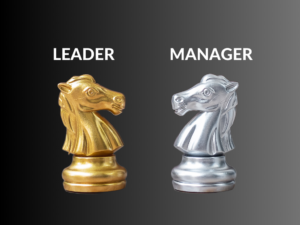Product Owner vs. Product Manager: Understanding the Key Differences
What is a Product Owner?
A product owner is a role within Agile software development that represents the product’s stakeholders, including customers, users, and the business. They are responsible for defining and prioritizing product features and ensuring the development team understands the requirements.
Examples of Product Owner
1. John works as a product owner at a software development company. He collaborates with the development team to define user stories and prioritize the product backlog.
2. Sarah serves as the product owner for a mobile app startup. She conducts market research, defines the product vision, and ensures the development team aligns with customer needs.
Uses of Product Owner
– Gathering and prioritizing product requirements
– Acting as a bridge between stakeholders and development teams
– Ensuring the development team delivers value to customers
What is a Product Manager?
A product manager focuses on the overall strategy, vision, and roadmap of a product throughout its lifecycle. They collaborate with various teams, including marketing, sales, and development, to ensure the product’s success in the market.
Examples of Product Manager
1. Emily is a product manager at an e-commerce company. She conducts market analysis, defines the product roadmap, and oversees its implementation from concept to launch.
2. Mike works as a product manager in a software company. He collaborates with cross-functional teams to gather feedback, prioritize features, and optimize the product’s performance.
Uses of Product Manager
– Defining the product strategy and vision
– Analyzing market trends and customer needs
– Collaborating with various teams to ensure product success
Differences between Product Owner and Product Manager
| Difference Area | Product Owner | Product Manager |
|---|---|---|
| Focus | Primarily on the development team and user stories. | Overall product strategy, vision, and market success. |
| Responsibilities | Defining and prioritizing product backlog items, facilitating sprint planning, and ensuring the development team understands requirements. | Analyzing market trends, defining product strategy, managing the product roadmap, and collaborating with cross-functional teams. |
| Communication | Acts as a bridge between stakeholders and development teams, ensuring the right features are implemented. | Collaborates with various teams, including marketing and sales, to align the product with customer needs and market trends. |
| Scope | Focuses on a specific product or feature set within a project. | Manages the entire product lifecycle, from conceptualization to launch and beyond. |
| Decision Making | Makes decisions based on the needs of the development team and stakeholders. | Makes strategic decisions based on market research, customer feedback, and business objectives. |
| Alignment | Aligns development efforts with stakeholders’ expectations and user requirements. | Aligns various teams with the product strategy and ensures the product meets market demands. |
| Measuring Success | Success is measured by delivering working software increments that meet user needs. | Success is measured by achieving business objectives, market success, and satisfying customer needs. |
| Related Roles | Scrum Master, Development Team | Marketing Manager, Sales Manager |
| Emphasis | User-centric focus, ensuring the right features are developed. | Business-centric focus, ensuring the product’s competitiveness and market success. |
| Skills | Understanding user needs, prioritization, communication, and Agile methodologies. | Market analysis, strategic thinking, leadership, and cross-functional collaboration. |
Conclusion
In summary, while both product owners and product managers play crucial roles in product development, they have distinct focuses and responsibilities. Product owners primarily ensure the development team delivers valuable software increments based on user needs, while product managers focus on the overall product strategy, market success, and collaboration with various teams.
People Also Ask
1. What is the main difference between a product owner and a product manager?
A product owner is more focused on defining and delivering the right features to users, while a product manager concentrates on the overall product strategy and market success.
2. Do product owners and product managers collaborate?
Yes, product owners and product managers often collaborate closely to align the development efforts with the product strategy and user needs.
3. Can one person be both a product owner and a product manager?
While it is possible for a person to fulfill both roles, it is more common for larger organizations to separate these responsibilities to ensure focused expertise.
4. What are the essential skills for a product owner?
Important skills for a product owner include understanding user needs, prioritization, effective communication, and proficiency in Agile methodologies.
5. How does a product manager contribute to market success?
A product manager analyzes market trends, gathers customer feedback, and collaborates with different teams to ensure the product meets market demands, ultimately contributing to its success.



